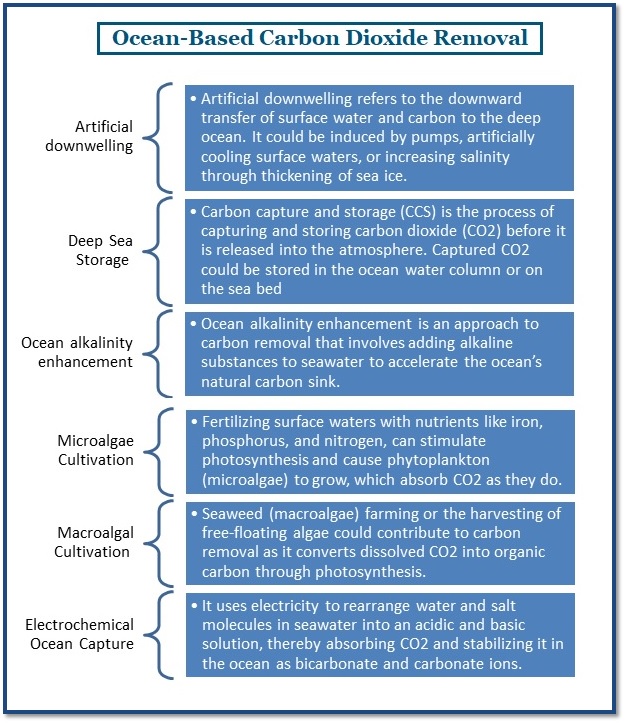7667766266
enquiry@shankarias.in
While researchers are exploring ways to pull carbon dioxide out of the atmosphere and lock it in the ocean, it raises serious technical, social and ethical questions.
The ocean covers about 70% of the planet, and it naturally takes up carbon dioxide. About a quarter of human-produced carbon dioxide ends up in the ocean.


Benefits of ocean carbon dioxide removal
Risks in ocean carbon dioxide removal
References